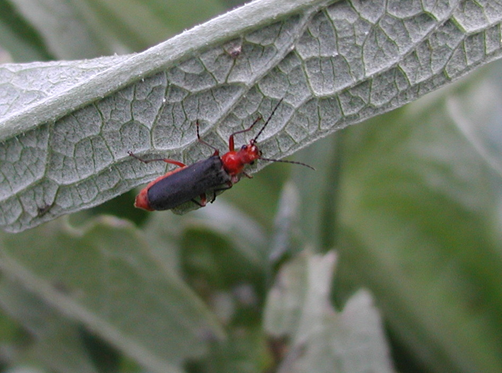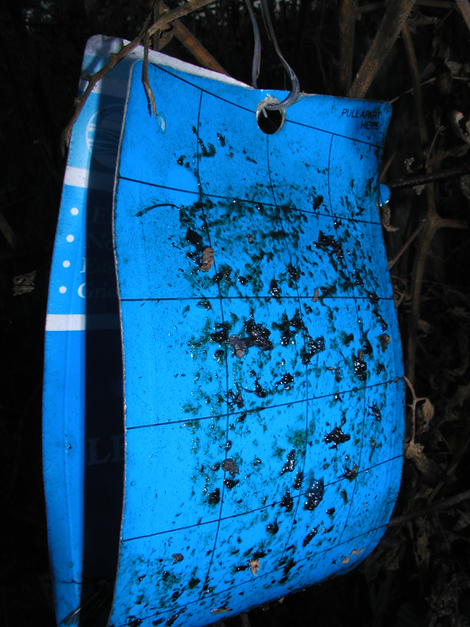What can Integrated Pest Management do for your gardening?

Integrated Pest Management (IPM) is an approach to prevent pests or manage pests in a less harmful manner than just reaching for a toxic chemical. It was developed by scientists in the 1970’s and the University of California program started in 1979.
IPM helps homeowners, gardeners and farmers deal with pests in a manner that is the least damaging to human health and to our environment. IPM likely got its impetus from Rachael Carson’s 1962 book "Silent Spring" which brought serious attention to the impacts of widespread pesticide use on our environment, wildlife and us. I was also inspired as a graduate student by this book.
IPM has several components thus the term integrated. First of all, is the correct identification of the pest and monitoring of its impacts. You need to know what creature or disease you are dealing with to select a winning strategy to control it. Pests can include weeds, vertebrates, invertebrates, insects, bacteria, viruses and fungi. If the pest does no economic damage, is it even a pest? If it is not harmful, nothing needs to be done.
Prevention by the selection of plants that are resistant to diseases or pests is a good starting place. For example, older cultivars of crepe myrtles (Lagerstroemia spp) are highly susceptible to powdery mildew, but newer cultivars, some with Native American names, are bred for resistance and don’t require treatment for powdery mildew especially when planted in the sun and properly pruned to keep them open. Some resistant varieties are: Catawba, Kiowa, Hopi, Natchez and many others see: https://bit.ly/3OMNKjA .
Most peaches are susceptible to peach leaf curl, a fungus that requires preventive spraying during the dormant season. Most people either forget to spray, or they lazily hope for the best — like a dry spring that inhibits the fungi.
There are a few varieties resistant to peach leaf curl and they are Frosty, Black Boy, Muir, Avalon Pride and Indian Free. If these varieties don’t suit, then plant others and vow to spray for peach leaf curl. Plant breeders are busy breeding disease-resistant roses, tomatoes and many plants that we can enjoy and avoid pest situations. This is the first line of defense against pests.
Another IPM practice is biological control which is to encourage the enemies of pests. Creating a diverse landscape that provides habitats and food for natural enemies of pests is a good practice and not indiscriminately spraying pesticides that kill them is a paramount consideration. Some beneficial insects that are predators on pests are lady beetles, lacewings, spiders, soldier beetles, syrphid flies and mini-parasitic wasps. The mini-wasps parasitize aphids and caterpillars. For more info on beneficial insects, see: https://bit.ly/3NQcB4R.
For many pests, physical barriers or mechanical removal will work to keep them at bay. For example, ants will invade your home for water and food. One way to keep them out is to eliminate any access by caulking openings or to remove any vegetation that they use as a highway into your home. Ant bait traps that work to kill ant colonies are another method. For aphids, a stream of water will wash them off rose buds or plant leaves without resorting to pesticides. Since aphids can return rather quickly this should be done as frequently as needed at least twice per week.

Barriers such as using old toilet paper rolls wrapped around young plant stems will work for cutworms if you should have that problem. Similarly, bird netting works to keep birds from picking your fruit before you get a chance.
Another way to control pests is to follow good gardening practices. Cleaning up debris and composting will eliminate hiding places for pests and keeping weeds under control will avoid the buildup of weed seeds in the soil. Soil solarization can also reduce the weed problem see: https://bit.ly/3AuZvXG. Be sanitary and remove infected plant material such as black spot infected leaves from under roses or petal blight infected blossoms from Camellias to diminish sources of disease-causing organisms.
When all else fails one can use pesticides, but use the least toxic one to get the job done. Follow directions on the label and use in ways that reduce human, pet and environmental exposure. IPM works well and I hope you will learn more garden tips at this informative website for gardeners: https://bit.ly/3nJhoKG.
There was a time when I used a few pesticides, but with age comes wisdom and I have gardened organically without resorting to pesticides for over 45 years. Happy IPM gardening.
If you have a gardening-related question you can contact the UC Master Gardeners at (209) 953-6112. More information can be found on our website: http://sjmastergardeners.ucanr.edu/CONTACT_US/
This article originally appeared on The Record: Here's what Integrated Pest Management can do for your garden

